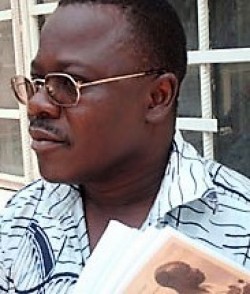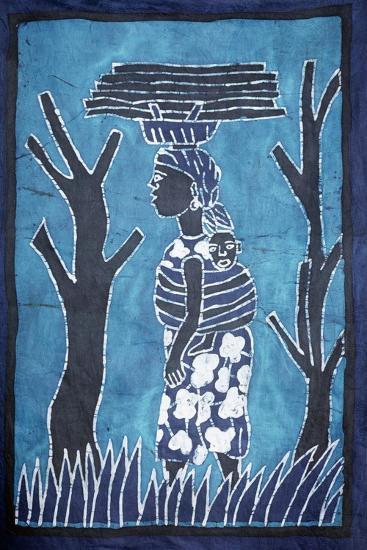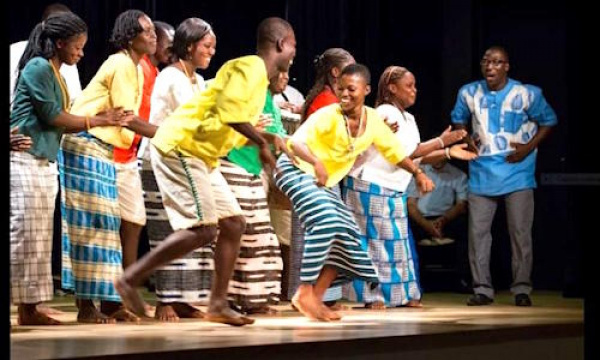Fabric dying is also a common art in Togo. Dyed batik-style fabric comes in many different colors and patterns, each signifying different aspects of life. Today, these clothes are used in formal or ceremonial events. Batik fabric is also used to make pictures out of and hang them as prints. There are a few modern-style artists from Togo who have made a name for themselves. The painter Sokey Edorh is known for his prints of the people and animals of Togo and how they change with the environment. Paul Ahyi is another artist who mainly works in zota, a style of pyro engraving. His works are not only showcased in Lomé, but they’re also internationally known.
 |
| Work by Paul Ahyi, almost reminds me a little of Gustav Klimt meets African style art. |
 |
| Félix Couchoro |
There were also quite a few playwrights from Togo. Anoumou Pedro Santos got them started with his play Fasi that he published in 1956. If you’re interested in the theatre, you should check out the works of Henri Ajavon, Modest d’Almeida, and Gilbert Laclé.
 |
| Christiane Akoua Ekua |
I’m glad to see there are quite a few women getting books published in Togo as well, including Pyabelo Kouly Chaold (famous for her book Memories of Twelve Years Spent in Germany), Christiane Akoua Ekue, Gad Ami, and Emilie Anifrani Ehah (known for her short stories).
Up next: music and dance



No comments:
Post a Comment